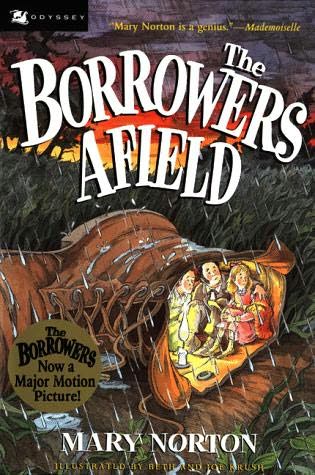

http://www.shit-inc.com/ex.htm

http://www.shit-inc.com/menu.htm
黑 鳥 Musings on contemporary art issues. Graffiti, street culture, urban painting, new media art, Second Life, blogging, internet resources, music, film, video & anything else that comes up. London Edition.






A race of tiny people who live beneath the floor of a proper human kitchen make friends with a young boy, and begin to learn about the world above their heads, from which they have borrowed the furniture and tools.
Video iPods have turned out to be a huge hit. But if you are like most owners, you will quickly tire of spending $2.00 at the iTunes store every time you want to watch something new.
Fortunately, video podcasts provide a way to automatically get new videos downloaded to your computer or portable media player.
Handbrake is a free, open-source application that you can use to convert your media to use on video iPods.
In this exclusive excerpt from the book, Podcasting: The Do It Yourself Guide, author Todd Cochrane explains how you can get started with podcasting using your computer and gear that you probably already own.
Blogger is a free blogging service that can be used to create podcasts. Getting started is as easy as filling out some forms on the web.
One way to dramatically improve the interest in your podcast is to include audio imaging. Simply put, audio imaging is the fancy sign that hangs out in front of your business.
The de facto standard format for podcasts is MP3. This article discusses how to save audio files as MP3 files.
Magnatune has emerged as a leading open music record label. We asked Magnatune founder John Buckman about his thoughts on podcasting and using tracks by his label's artists in podcasts.
The National Association of Broadcasters has launched the largest radio promotional campaign ever, marketing radio as the primary source for news, music and compelling audio entertainment. This marketing campaign will be hard to avoid on traditional radio.
One place you're not likely to hear it, though, is in the world of podcasting. We asked several leading podcasters about the campaign, their thoughts on the state of traditional broadcasting, and why some listeners are looking for an alternative.
A tutorial about getting started with podcasts using the free iPodder client.
A brief introduction to podcasting.
http://www.podcastingnews.com/

"What the hell is this? I can't tell how to get anywhere," one of the site's first visitors told the Cubist Society's Webmaster-Curator, Paulo Cassat. "Is this art, or is this a Web site?"
"Thank you," Cassat responded.
....
This site is going to turn people off," complained one young sculptor. "I mean, how do I get from the home page to, say, the fundraising form?"
"You must be willing to abandon your pre-conceived notions of traditional Web design," replied Bernioz, "and disregard its nefarious standards of foreshortening, modeling, and chiaroscuro (the distribution of light and shade)."
"Uh-huh. But how do I find the link?" the young man persisted.
"You must embrace the idea that the link exists," said Bernioz, "for once that idea is established, form itself can be forgotten."
"You don't know where it is, do you?"
"Not specifically, no," Bernioz conceded. "It's there somewhere. I think on a nonsequential parallel plane right behind the polygonal search box."
http://satirewire.com/news/0011/cubist_site.shtml




